by Jon LeSage, editor and publisher, Green Auto Market
Here’s my take on the 10 most significant and interesting occurrences during the past week…….
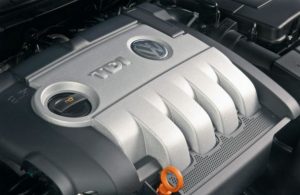 VW settlement: Volkswagen will be managing a program similar to the federal government’s cash-for-clunkers program that started in 2009. The German automaker will be buying back or fixing as many as 562,000 diesel vehicles in the U.S. into 2019 as part of its diesel emissions cheating settlement. While the federal government gave out about $3 billion subsidizing gas-guzzling vehicles for fuel efficient vehicles, VW may spend about $10 billion on new-vehicle purchases to replace diesels with excessive emissions. VW has hired about 1,300 contractors to process its diesel program-related paperwork and staff call centers, shortening the average hold time to less than five minutes, said Hinrich Woebcken, who became VW of America’s CEO last April. More than 1,000 cars have been fixed and returned to the used-car market, he said.
VW settlement: Volkswagen will be managing a program similar to the federal government’s cash-for-clunkers program that started in 2009. The German automaker will be buying back or fixing as many as 562,000 diesel vehicles in the U.S. into 2019 as part of its diesel emissions cheating settlement. While the federal government gave out about $3 billion subsidizing gas-guzzling vehicles for fuel efficient vehicles, VW may spend about $10 billion on new-vehicle purchases to replace diesels with excessive emissions. VW has hired about 1,300 contractors to process its diesel program-related paperwork and staff call centers, shortening the average hold time to less than five minutes, said Hinrich Woebcken, who became VW of America’s CEO last April. More than 1,000 cars have been fixed and returned to the used-car market, he said.- GM and Honda fuel cell plant: Hydrogen fuel cell vehicle alliances are continuing to move forward, with General Motors and Honda announcing a plan to invest $85 million to build hydrogen fuel cell stacks at a factory in Michigan. The joint venture, Fuel Cell System Manufacturing, will begin producing the fuel cell systems around 2020 at GM’s Brownstown Township, Mich., plant south of Detroit. GM has been using that plant to produce battery packs for its hybrid and electric vehicles. The companies say that at least 100 new jobs will be created to make the hydrogen fuel cell stacks. In 2013, GM and Honda created a long-term, definitive master agreement to co-develop next-generation fuel cell system and hydrogen storage technologies. Sharing patented information has been part of the relationship with the companies collectively filing more than 1,200 fuel cell patents between 2002 and 2012. Earlier this month, Toyota, BMW, Daimler, Honda, and Hyundai, announced that they’re joining up with several other companies to invest a combined $10.7 billion in hydrogen-related products within five years. Thirteen automakers, and energy and industrial companies, are forming a hydrogen council to support hydrogen fueling and FCEVs; and to provide another channel beyond battery power to hit the zero emission vehicle mark.
- Model S No. 1: The Tesla Model S was the world’s top selling plug-in electrified vehicle for the second year in a row. Tesla hasn’t confirmed the number but it’s estimated to be at 50,931 units sold last year. The Nissan Leaf still has the highest sales volume with 61,507 units sold in 2014. In 2016, the Leaf came in at 49,226 and second place for the second consecutive year. Chinese automaker BYD, which was the top global selling maker of PEVs last year, had three of the top 10 selling electric cars. The crossover SUV BYD Tang plug-in hybrid came in at No. 3; the Qin plug-in hybrid finished at No. 8; and the e6 sedan, China’s top selling all-electric car, came in at No. 9.
- Daimler and Uber partnering on self-driving vehicles: Daimler AG has made an agreement with Uber Technologies to include the German automaker’s self-driving vehicles in Uber’s ride-hailing network in the “coming years.” Details haven’t been released on the agreement, but it does indicate Uber’s willingness to work with other partners beyond its Volvo alliance. The agreement doesn’t include plans to team up on jointly developing technology for autonomous vehicles, according to a Daimler spokesman. In other news, Uber CEO Travis Kalanick has been under attack on the internet for allowing Uber drivers to access JFK Airport in New York as taxi drivers refused to do business there; boycotting the airport was part of a protest by the taxi industry against the Trump administration’s recent decision to close the nation’s borders to refugees and people from predominantly Muslim countries. Uber issued a statement in support of Uber drivers who are citizens of Iran, Iraq, Libya, Somalia, Sudan, Syria, or Yemen and live in the US but have left the country, and won’t able to return for 90 days. “This means they won’t be able to earn money and support their families during this period,” he said. The statement also announced creation of a $3 million legal defense fund to help drivers with immigration and translation services. Lyft has also been pulled into the scandal and has agreed to donate $1 million over the next four years to the ACLU to defend the U.S. constitution.
- Accessing EVgo network: Nissan and BMW are working with EVgo to increase public access to DC Fast charging stations across the U.S. That will come through access to an additional 174 locations in 33 states now available to all electric vehicle owners in those markets, and over 50 more planned to be installed in 2017, supported by the partnership. EVgo’s fast charging network now totals 668 dual-port DC Fast charging stations installed and available to all EV drivers across the U.S., with access to new chargers continually being added.
- Green Car Award winners named: Three winners of Green Car Journal’s Green Car Awards were announced at a Washington Auto Show press conference. Named 2017 Connected Green Car of the Year is the Mercedes-Benz C350e, with the 2017 Green SUV of the Year awarded to the BMW X5 xDrive40e, and the 2017 Luxury Green Car of the Year going to Acura’s new NSX. The Mercedes-Benz C350e delivers all the luxury and driving enjoyment expected of the automaker’s popular C Class with the additional benefit of efficient plug-in hybrid power. BMW’s X5 xDrive40e iPerformance features appointments appreciated by BMW drivers combined with efficient plug-in hybrid power. The Acura NSX is powered by a 500 horsepower Sport Hybrid SH-AWD powertrain integrating a 3.5-liter mid-ship V-6 and three electric motors. It can go 0 to 60 mph in 2.9 seconds while still delivering over 30 percent better city fuel efficiency than the model’s previous generation.
- Ford in Super Bowl ad: Ford Motor Co. will be running a 90-second commercial highlighting its mobility solutions on Super Bowl Sunday, tying into the opening of its FordHub center in New York showcasing these technologies and services. The Super Bowl ad highlights Ford’s advancements in ride sharing, electric vehicles, bike sharing, and self-driving cars. FordHub is a 2,900-sqare-foot hands-on experiential center located at the Westfield World Trade Center in New York City. Visitors will be able to try out exhibits and learn more about Ford’s vision as an evolving mobility company offering transportation solutions instead of just making vehicles.
- Dealers and EVs: Audi of America President Scott Keogh spoke last week at the J.D. Power Automotive Summit on how Audi and other dealers can break through in selling and servicing plug-in vehicles. Dealers have been known to divert car shoppers away from EVs and over to higher profit margin traditional vehicles. Home-charging station installation and other services needed by EVs could be excellent service opportunities for dealers, he said. The German brand will be launching three new battery electric vehicles in the U.S. by 2020; it will be part of parent company Volkswagen’s campaign to launch 30 BEVs by 2025 in the wake of its diesel emissions scandal. Keogh said that Audi will need its dealers supporting the effort for the electrification campaign to succeed.
- SMART Center Gains $45 in funding: Ohio Governor John Kasich last week announced that the State of Ohio and the Ohio State University are funding the $45 million Phase 1 expansion of the Transportation Research Center’s (TRC) all-new 540-acre SMART (Smart Mobility Advanced Research and Test) Center – a state-of-the-art hub for automated and autonomous testing, to be built within the 4,500 acres of the nation’s largest independent automotive proving grounds. TRC has been testing different types of vehicles – cars, trucks, buses, ATVs, military vehicles, specialty vehicles – and components on its 4,500-acre facility in East Liberty, Ohio for more than 40 years, including testing automated and autonomous vehicles over the last two decades. Phase 1 of the expansion will include a flexible platform and infrastructure; the industry’s largest high-speed intersection; the industry’s longest and most flexible test platform (a space the width of more than 50 highway lanes and the length of 10 football fields end-to-end); an urban network of intersections, roundabouts, traffic signals; and a rural network including wooded roads, neighborhood network and a SMART Center support building.
- Car2Go adds to its fleet: Car2go will be adding thousands of 2017 model year Mercedes-Benz CLA and GLA four-door, five passenger vehicles to its fleet. The carsharing company anticipates that Mercedes-Benz vehicles will comprise the majority of its North American fleet by the end of 2017. The compay says this comes right after car2go’s recent upgrades to its member experience with the rollout of thousands of new, improved, car2go smart fortwo vehicles to its U.S. and Canadian network. “At Mercedes-Benz we see the four key pillars for future mobility as connectivity, autonomous driving, carsharing, and electrification,” said Dieter Zetsche, CEO of owner company Daimler AG. “Today we take another step toward that future by adding the new Mercedes-Benz CLA and GLA to Car2go’s North American fleet.”

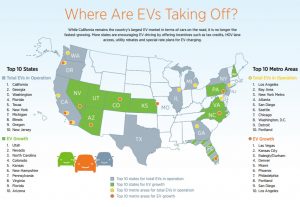 ChargePoint and McKinsey & Co. have put out studies in the past week offering an interesting look at the state of plug-in electrified vehicles and the charging infrastructure in the U.S. and abroad.
ChargePoint and McKinsey & Co. have put out studies in the past week offering an interesting look at the state of plug-in electrified vehicles and the charging infrastructure in the U.S. and abroad. Utilities supporting charging:
Utilities supporting charging: 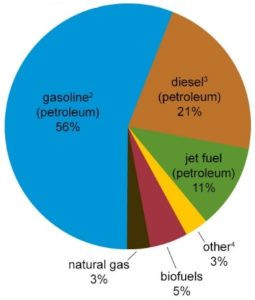 If you were to study the U.S. Energy Information Administration’s chart on transportation sources/fuels used during 2015, it could end up being depressing – unless you’re set up to do well investing in petroleum. If jet fuels were removed from the chart, the share of gasoline and diesel would increase and dominate the pie chart even more; the other categories would increase, too. Biofuels and natural gas lead the way in alternative fuels, while electricity and propane autogas are lumped together in the “other” category, along with a few other types. If you were to look at what’s fueling electric power plants, renewable energy is in a similar situation compared to fossil fuels; though it has gotten better.
If you were to study the U.S. Energy Information Administration’s chart on transportation sources/fuels used during 2015, it could end up being depressing – unless you’re set up to do well investing in petroleum. If jet fuels were removed from the chart, the share of gasoline and diesel would increase and dominate the pie chart even more; the other categories would increase, too. Biofuels and natural gas lead the way in alternative fuels, while electricity and propane autogas are lumped together in the “other” category, along with a few other types. If you were to look at what’s fueling electric power plants, renewable energy is in a similar situation compared to fossil fuels; though it has gotten better.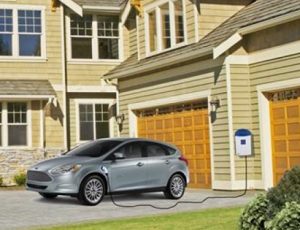 two years, with incentives and a wide variety of PEVs available, driving growth in China. The U.S. and Europe are also seeing impressive gains. If this trend continues over the next 15 years, PEVs will make a decent share of global new vehicle sales, well beyond the current level of about 1% of global sales.
two years, with incentives and a wide variety of PEVs available, driving growth in China. The U.S. and Europe are also seeing impressive gains. If this trend continues over the next 15 years, PEVs will make a decent share of global new vehicle sales, well beyond the current level of about 1% of global sales.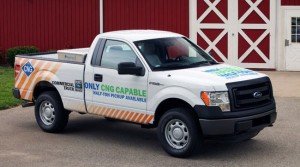 members. The industry is seeing significant advancements where technologies are being deployed in the latest generation of natural gas engines and fueling infrastructure. These are dramatically lowering emissions, providing North American fleets with the ‘greenest’ choice, said NGVAmerica President Matthew Godlewski.
members. The industry is seeing significant advancements where technologies are being deployed in the latest generation of natural gas engines and fueling infrastructure. These are dramatically lowering emissions, providing North American fleets with the ‘greenest’ choice, said NGVAmerica President Matthew Godlewski.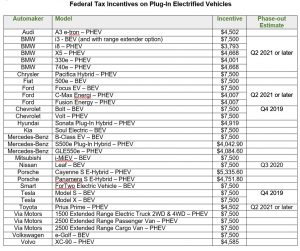 Each automaker’s qualifying PEV receives a federal credit until the 200,000th plug-in vehicle is registered inside the U.S.; at that point, tax credits are reduced and then phased-out over an allotted time period. Once the 200K mark is reached, the full tax credit continues through the end of that quarter and until the end of the next one. Credits on a $7,500 tax credit will drop to $3,750 for the next six months, and then to $1,875 for the next six months before going away. The chart below shows the phase-out quarter being the estimated time period when the tax incentive disappears.
Each automaker’s qualifying PEV receives a federal credit until the 200,000th plug-in vehicle is registered inside the U.S.; at that point, tax credits are reduced and then phased-out over an allotted time period. Once the 200K mark is reached, the full tax credit continues through the end of that quarter and until the end of the next one. Credits on a $7,500 tax credit will drop to $3,750 for the next six months, and then to $1,875 for the next six months before going away. The chart below shows the phase-out quarter being the estimated time period when the tax incentive disappears.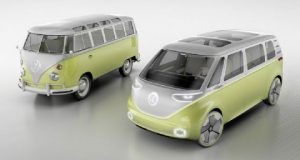 Detroit auto show: The North American International Auto Show has not been dominated by certain vehicle types, such as pickups and SUVs might have done in the past. Plug-in electrified vehicles have played their part, along with futuristic concept vehicles and mobility services. Back-to-back with the influential CES 2017 show in Las Vegas, the two car shows have had a few things in common. Volkswagen’s I.D. Buzz has taken a lot of attention. The electric microbus of the future is built on the MEB platform and may be able to travel 270 miles once fully charged. It offers maximum space utilization with all-wheel drive, electric motors at the front and rear axles, a fully autonomous driving mode (“I.D. Pilot”), and a new generation of display elements and controls…. The all-new Chevy Bolt electric car continues to win big awards, taking the North American Car of the Year award. The Chrysler Pacifica minivan was named North American Utility of the Year, the first time the award has been given out, and it also comes in a plug-in hybrid variation….. BMW showed its new 530 iPerformance plug-in hybrid. At 248 hp, it will go to 60 mph in about 5.9 seconds. It will also deliver up to 14 miles in all-electric mode, earning an EPA-rated 64 MPGe. The rear-wheel drive version will start at $51,400 while the all-wheel drive xDrive version will begin at $53,700…… Ford presented its vision for the “City of Tomorrow.” It looks at how near-term mobility advancements – including autonomous and electric vehicles, ride-sharing, ride-hailing, and connected vehicles – interact with urban infrastructure and create a transportation ecosystem to deal with challenges such as gridlock and air pollution. Ford’s City Solutions team has been working with cities around the world to propose, pilot, and develop mobility solutions. The team also is beginning to collaborate with Bloomberg Philanthropies and its global coalition of mayors…… Toyota rolled out a redesigned 2018 Camry with more interior space, advancements in its drive system, and a hybrid version that gets Prius-like fuel economy……… Waymo CEO John Krafcik announced that the former Google self-driving car division has been able to drop the cost of its Lidar sensors from about $75,000 per vehicle to about $7,500, which will help lower the cost of autonomous vehicle technologies for interested automaker partners. These new Lidar systems will be installed soon in 100 self-driving Chrysler Pacifica minivans that Waymo acquired from Fiat Chrysler Automobiles…… Audi unveiled the all-new Q8 SUV plug-in hybrid that will be out in production next year. It will be Audi’s second plug-in hybrid to enter the U.S. market, following the Audi A3 Sportback e-tron station wagon.
Detroit auto show: The North American International Auto Show has not been dominated by certain vehicle types, such as pickups and SUVs might have done in the past. Plug-in electrified vehicles have played their part, along with futuristic concept vehicles and mobility services. Back-to-back with the influential CES 2017 show in Las Vegas, the two car shows have had a few things in common. Volkswagen’s I.D. Buzz has taken a lot of attention. The electric microbus of the future is built on the MEB platform and may be able to travel 270 miles once fully charged. It offers maximum space utilization with all-wheel drive, electric motors at the front and rear axles, a fully autonomous driving mode (“I.D. Pilot”), and a new generation of display elements and controls…. The all-new Chevy Bolt electric car continues to win big awards, taking the North American Car of the Year award. The Chrysler Pacifica minivan was named North American Utility of the Year, the first time the award has been given out, and it also comes in a plug-in hybrid variation….. BMW showed its new 530 iPerformance plug-in hybrid. At 248 hp, it will go to 60 mph in about 5.9 seconds. It will also deliver up to 14 miles in all-electric mode, earning an EPA-rated 64 MPGe. The rear-wheel drive version will start at $51,400 while the all-wheel drive xDrive version will begin at $53,700…… Ford presented its vision for the “City of Tomorrow.” It looks at how near-term mobility advancements – including autonomous and electric vehicles, ride-sharing, ride-hailing, and connected vehicles – interact with urban infrastructure and create a transportation ecosystem to deal with challenges such as gridlock and air pollution. Ford’s City Solutions team has been working with cities around the world to propose, pilot, and develop mobility solutions. The team also is beginning to collaborate with Bloomberg Philanthropies and its global coalition of mayors…… Toyota rolled out a redesigned 2018 Camry with more interior space, advancements in its drive system, and a hybrid version that gets Prius-like fuel economy……… Waymo CEO John Krafcik announced that the former Google self-driving car division has been able to drop the cost of its Lidar sensors from about $75,000 per vehicle to about $7,500, which will help lower the cost of autonomous vehicle technologies for interested automaker partners. These new Lidar systems will be installed soon in 100 self-driving Chrysler Pacifica minivans that Waymo acquired from Fiat Chrysler Automobiles…… Audi unveiled the all-new Q8 SUV plug-in hybrid that will be out in production next year. It will be Audi’s second plug-in hybrid to enter the U.S. market, following the Audi A3 Sportback e-tron station wagon. The question of which clean technology will prevail in the car of the future continues to permeate the auto industry. Plug-in electrified vehicle sales led the way in recent months, breaking the 1% mark of total sales in the U.S. for the first time in November; and seeing ambitious PEV product launch announcements from Volkswagen, Daimler, BMW, and Toyota in the fall. That was triggered by Tesla receiving more than 400,000 down payments soon after showing its Model 3 reveal during the spring; and post-VW “dieselgate” scandal government crackdowns increased in Europe, the U.S., and South Korea.
The question of which clean technology will prevail in the car of the future continues to permeate the auto industry. Plug-in electrified vehicle sales led the way in recent months, breaking the 1% mark of total sales in the U.S. for the first time in November; and seeing ambitious PEV product launch announcements from Volkswagen, Daimler, BMW, and Toyota in the fall. That was triggered by Tesla receiving more than 400,000 down payments soon after showing its Model 3 reveal during the spring; and post-VW “dieselgate” scandal government crackdowns increased in Europe, the U.S., and South Korea. 3 new global electrified vehicles the automaker plans to introduce in the next five years, including hybrid versions of the F-150 pickup and Mustang in the U.S., and a plug-in hybrid Transit Custom van in Europe. A high-volume autonomous hybrid vehicle designed for commercial ride hailing or ride sharing will be launched globally in 2021, starting in North America. Ford will also launch two new, pursuit-rated hybrid police vehicles. The automaker will be adding 700 direct new U.S. jobs and investing $700 million during the next four years, creating the new Manufacturing Innovation Center at its Flat Rock Assembly Plant in Michigan.
3 new global electrified vehicles the automaker plans to introduce in the next five years, including hybrid versions of the F-150 pickup and Mustang in the U.S., and a plug-in hybrid Transit Custom van in Europe. A high-volume autonomous hybrid vehicle designed for commercial ride hailing or ride sharing will be launched globally in 2021, starting in North America. Ford will also launch two new, pursuit-rated hybrid police vehicles. The automaker will be adding 700 direct new U.S. jobs and investing $700 million during the next four years, creating the new Manufacturing Innovation Center at its Flat Rock Assembly Plant in Michigan.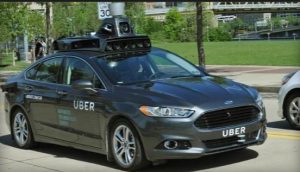 Michigan now leading the way: Last month, Michigan Gov. Rick Snyder signed a package of bills to clear the way for self-driving cars to operate on public roads and re-establish the state as the leader in automotive innovation. The Michigan bills establish regulations for the testing, use, and eventual sale of autonomous vehicle technology, and were crafted to more clearly define how self-driving vehicles can be legally used on public roadways. The new laws allow testing of vehicles without steering wheels, pedals, or needed human control – which aims to propel Michigan ahead of California, which had been the leading state in the U.S. for testing autonomous vehicles.
Michigan now leading the way: Last month, Michigan Gov. Rick Snyder signed a package of bills to clear the way for self-driving cars to operate on public roads and re-establish the state as the leader in automotive innovation. The Michigan bills establish regulations for the testing, use, and eventual sale of autonomous vehicle technology, and were crafted to more clearly define how self-driving vehicles can be legally used on public roadways. The new laws allow testing of vehicles without steering wheels, pedals, or needed human control – which aims to propel Michigan ahead of California, which had been the leading state in the U.S. for testing autonomous vehicles.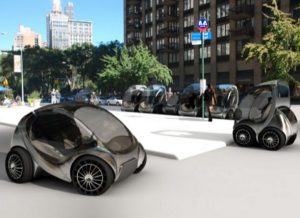 Automakers took serious steps forward during 2016 showing their commitment to mobility services and the changing identity of automakers in the near future.
Automakers took serious steps forward during 2016 showing their commitment to mobility services and the changing identity of automakers in the near future. The Federal Highway Administration
The Federal Highway Administration 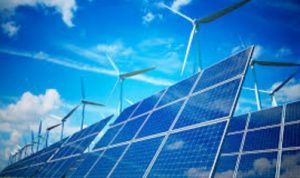 Renewables: While not yet officially announced, Scientific American just reported that renewable-energy sources such as solar and wind are expected to account for 8% of U.S. electricity-generation capacity in 2017, according to the U.S. Department of Energy. Solar growth is behind much of it.
Renewables: While not yet officially announced, Scientific American just reported that renewable-energy sources such as solar and wind are expected to account for 8% of U.S. electricity-generation capacity in 2017, according to the U.S. Department of Energy. Solar growth is behind much of it.